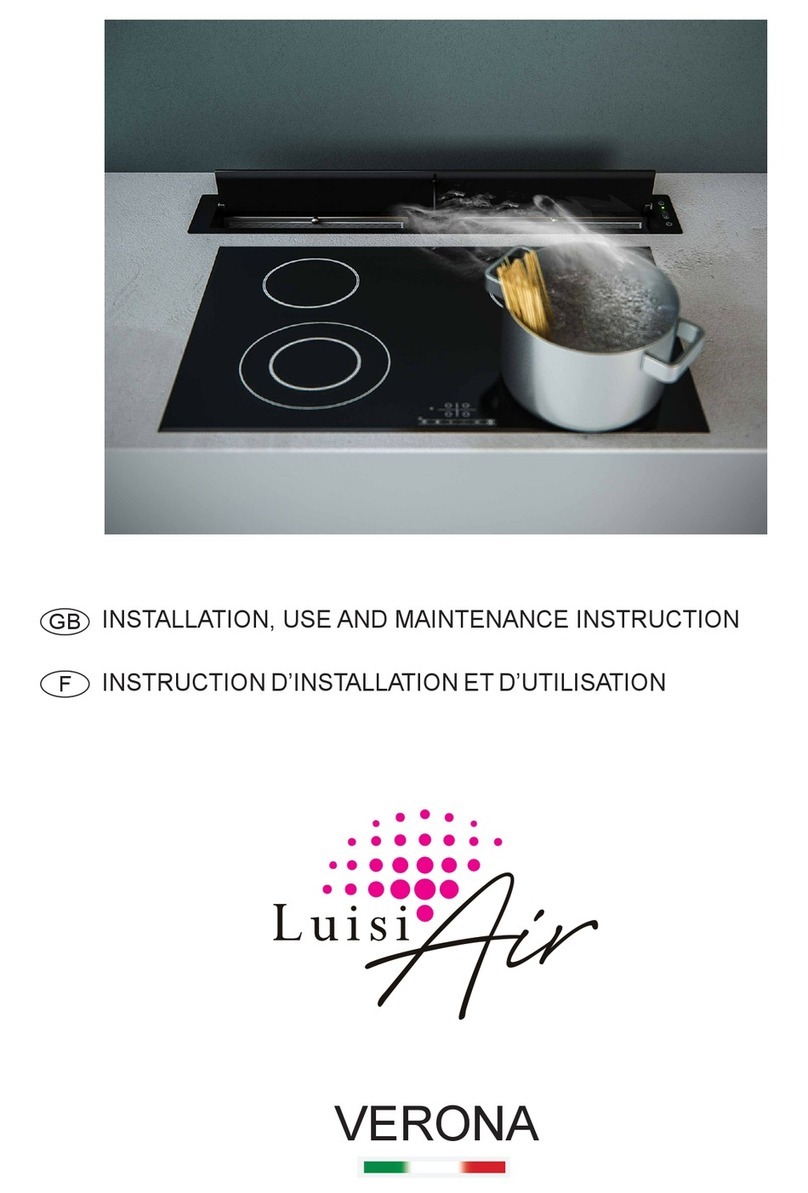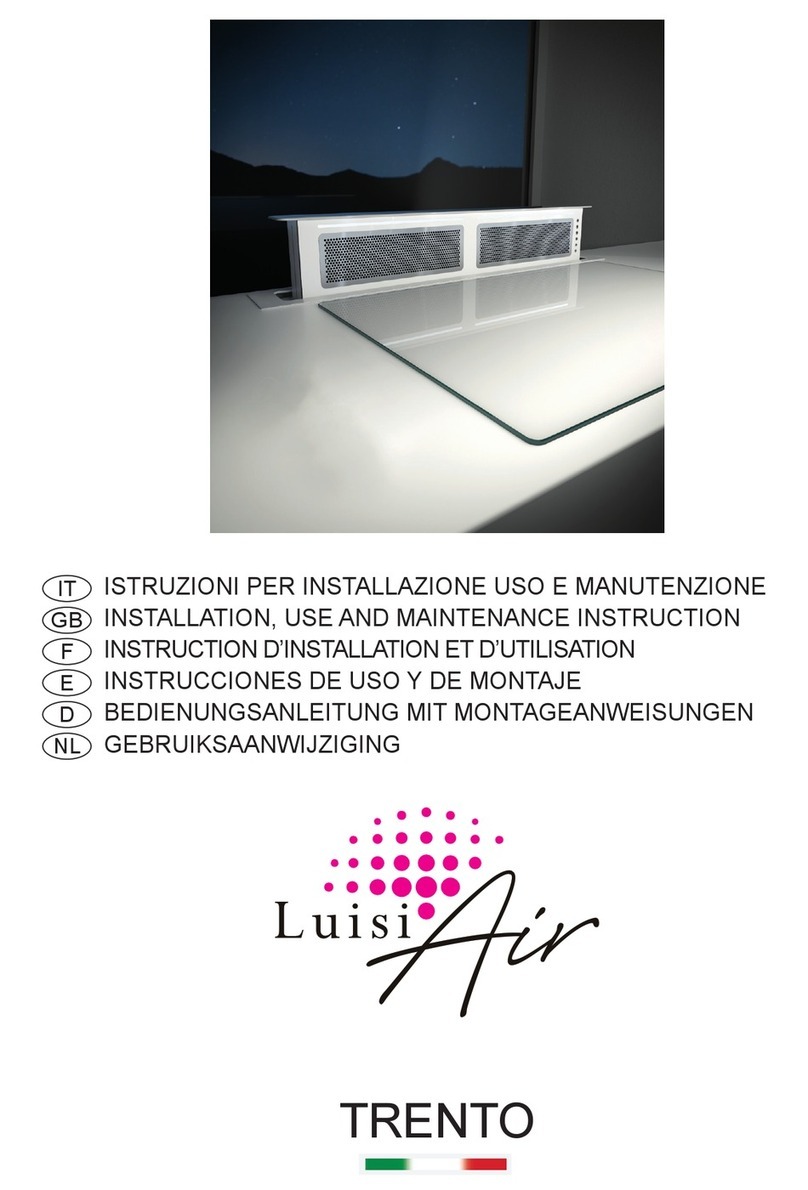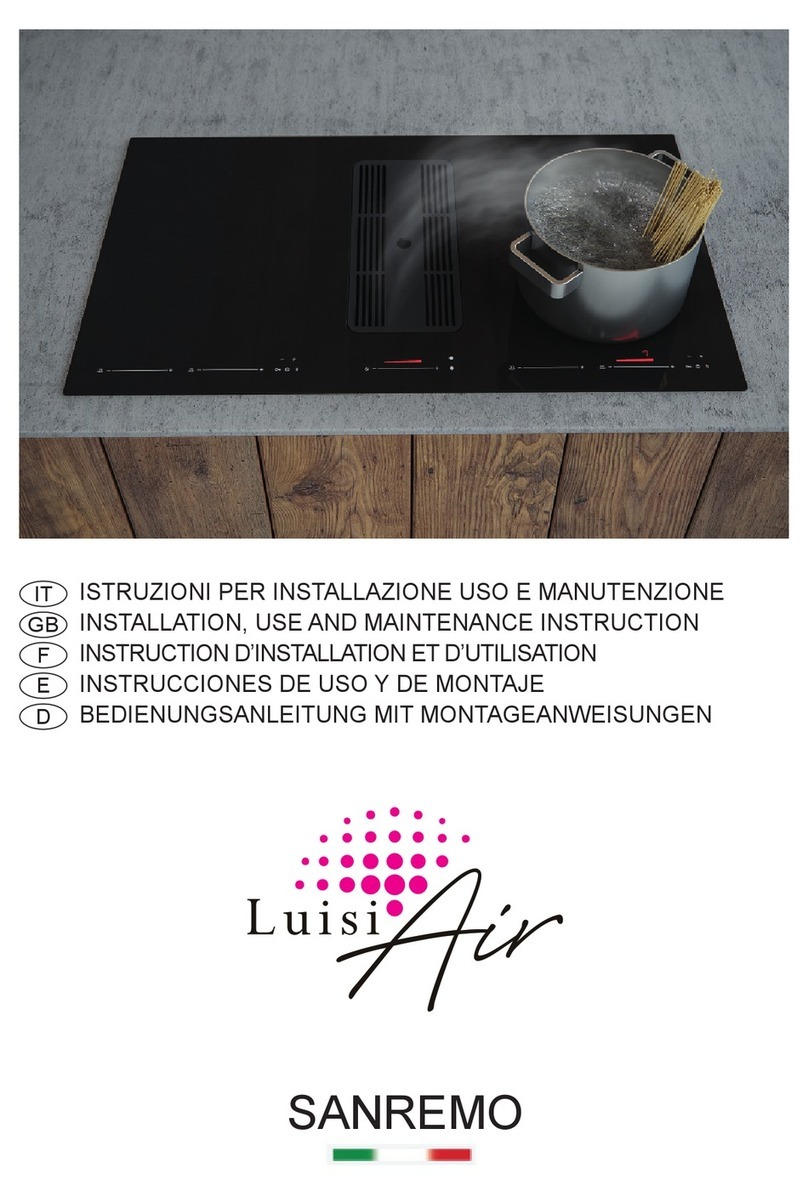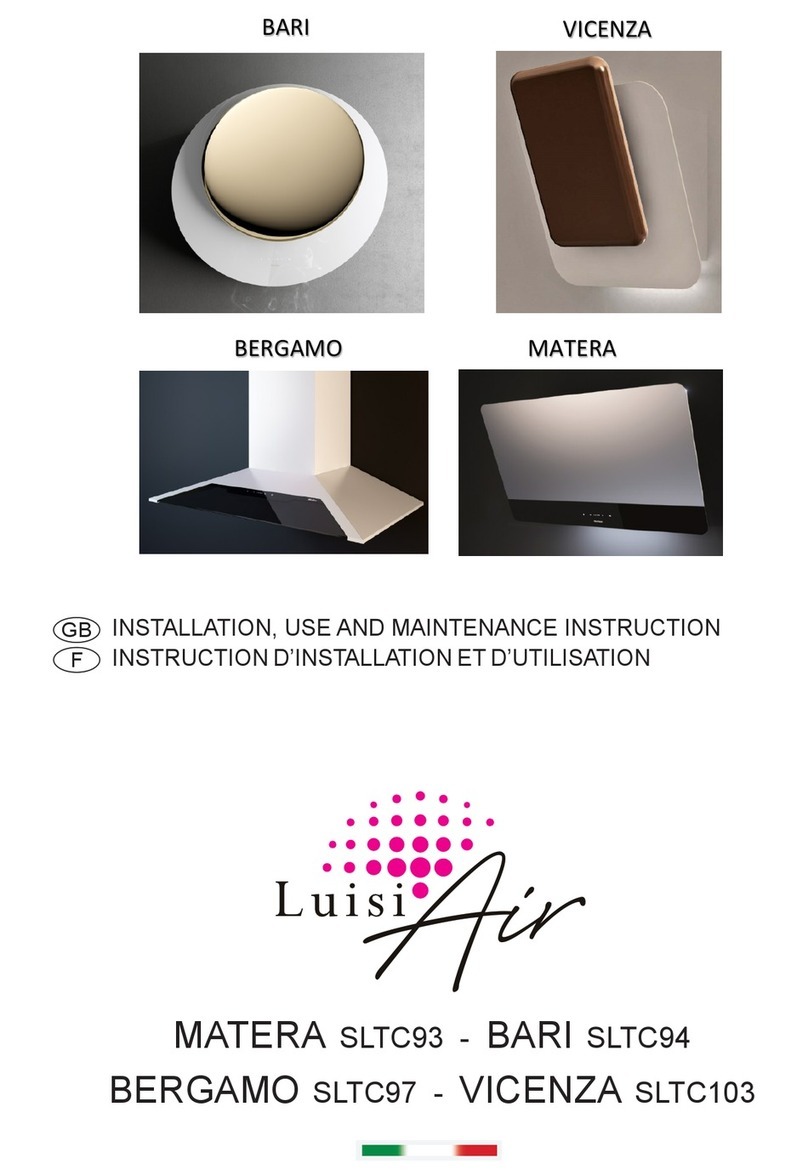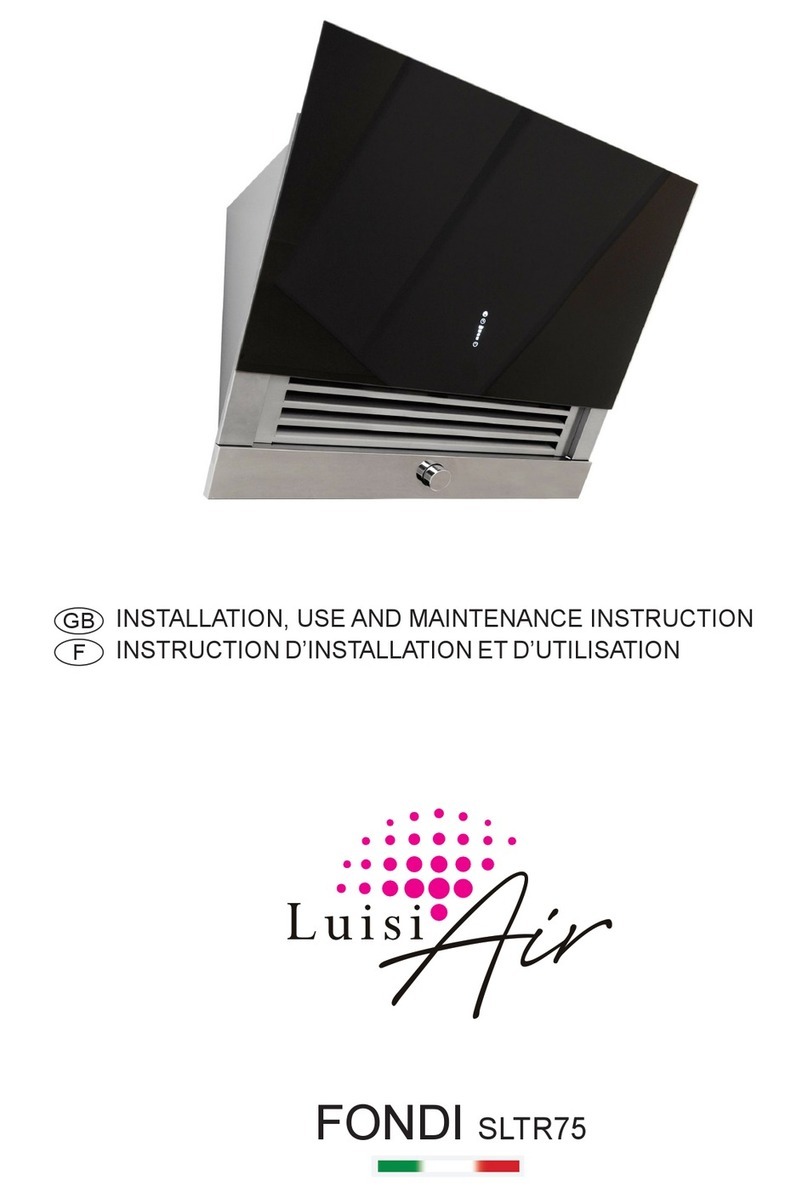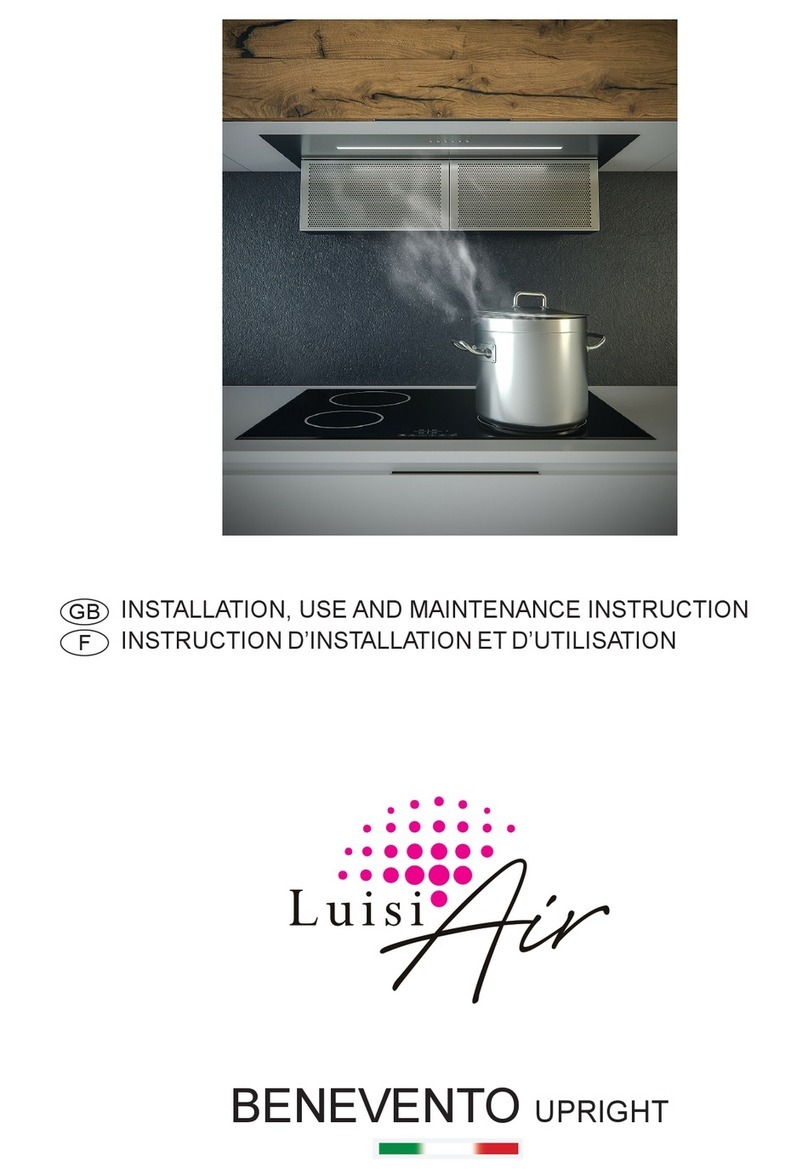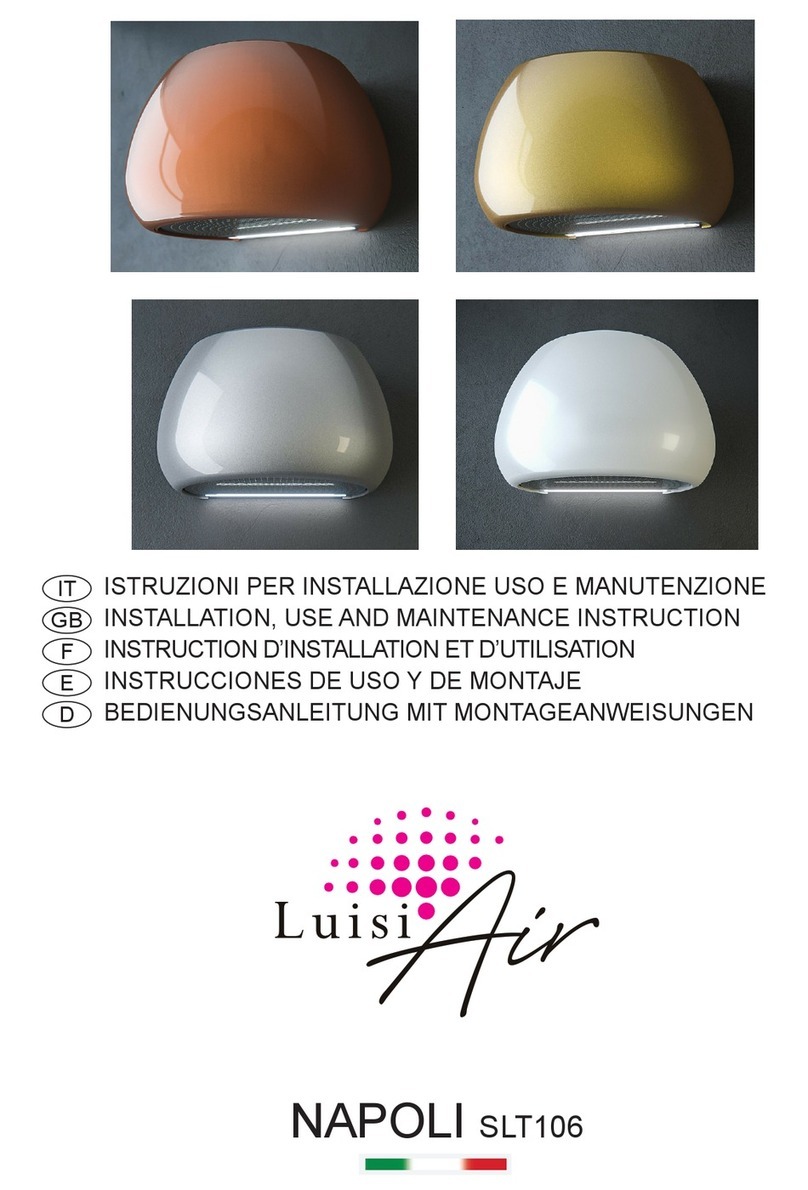
5
INSTALLATION
*Before installing the appliance, make sure
thatnoneofthepartsisdamagedinanyway.
In case of damaged parts, contact your re-
taileranddonotproceedwithinstallation.
Read all of the following instructions care-
fully before installing the appliance:
- Useanairoutletpipeoftheshortestpos-
sible length.
- Limitthenumberofpipeelbows.
- Useamaterialapprovedbystandardsand
regulations.
- Avoidanysuddenchangesinthepipesec-
tion (recommended constant diameter: Ø
150mmorequalsurfacearea).
-The manufacturer shall not respond for
air capacity or noise problems due to non-
compliance with above mentioned instruc-
tions, and no warranty shall be given.
By using its drilling template (g. 3A), drill
the holes for the installation; Appliances
shall be installed at a minimum distance of
450mm from the cook-top.
Installthedowellinsidetheholesandinsert
two screws inside the two holes on the upper
part. Do not tighten the screws completely,
but leave about 2mm. between the wall and
theheadofthescrew.(Fig.5)
Fix the hood on the wall, so that the two
screws perfectly coincide with the appro-
priate hook, placed on the back side of the
hood.(Fig.6).
Open the front panel by rotating the lower
side upwards.
Remove the grease lter and x the ap-
pliance to the wall with the screws provided.
* Sucking version
Fixthepipebearingbrackettothewalland/
or ceiling by using the anchor screws and
screws provided (g. 7), centred to the hood.
Connect the motor air-outlet ange to the
exhaust hole, by using a suitable pipe. Per-
form the electric connection. Place the two
ornamental pipes on the hood body ; lift the
internalpipeupuntilitreachestheceiling;
then x it to the pipe bearing bracket, by
using the two self-threaded screws provi-
ded.
USES
The appliance has been designed to work
both in ltering and sucking mode.
* Intheltering version(g.1),theairand
fumes conveyed by the appliance are puri-
ed
by bothagreaselterandanactivatedchar-
coal lter, and then re-circulated into the
roomthrough the side-grids of the chim-
ney.Whentheapplianceworksinthismode,
we recommend the use of an air deector
(Fig.1A) to be placed on the upper part of
the pipe, allowing the air to be re-circulated
into the room .
* In the sucking version (g. 2), fumes
are directly conveyed outside the building,
through the top or rear air out-let. The use
of a charcoal lter and air deector is not
necessary in this case.
If the appliance is equipped
with a power cord and a plug,
it shall be placed in such a
way that the plug can be rea-
ched easily.
* The use of materials which
can burst into ames (am-
bé) should be avoided in
close proximity of the ap-
pliance. When frying, please
pay particular attention to
re risk due to oil and gre-
ase. Being highly inamma-
ble, fried oil is especially
dangerous. Do not use un-
covered electric grills.
In order to avoid possible
re risk, all instructions
for grease-lter cleaning
and for removing eventual
grease deposits should be
strictly followed.

